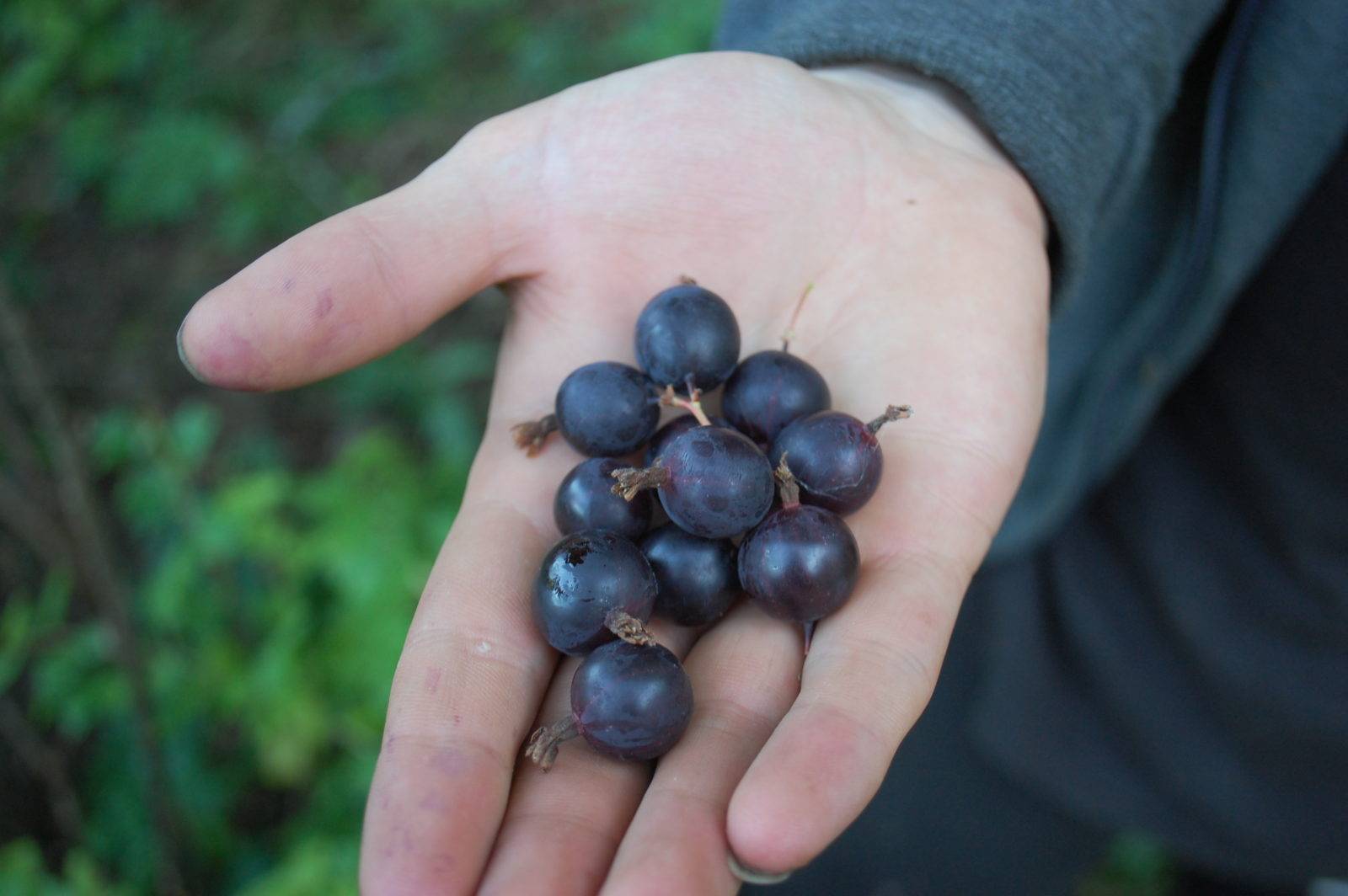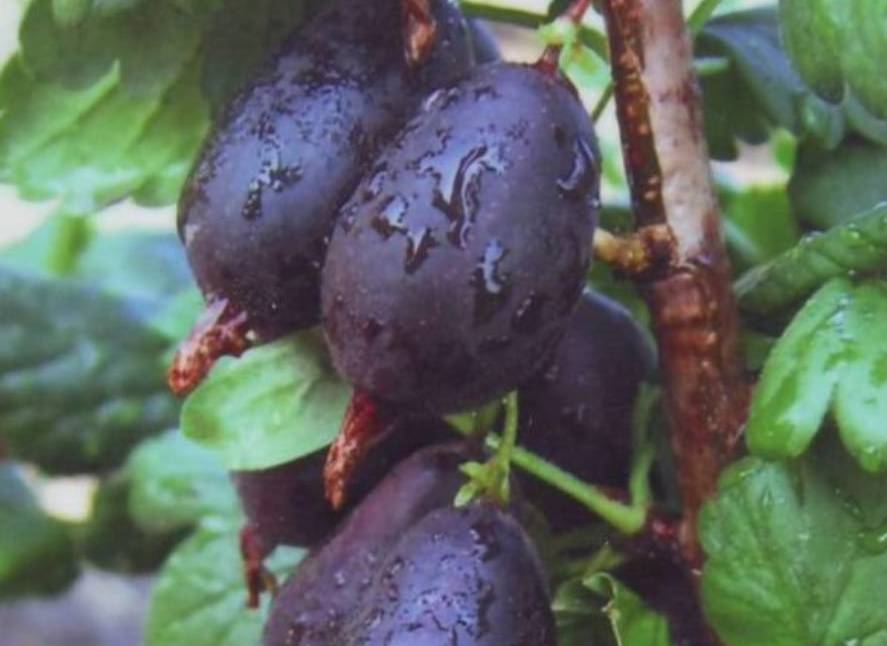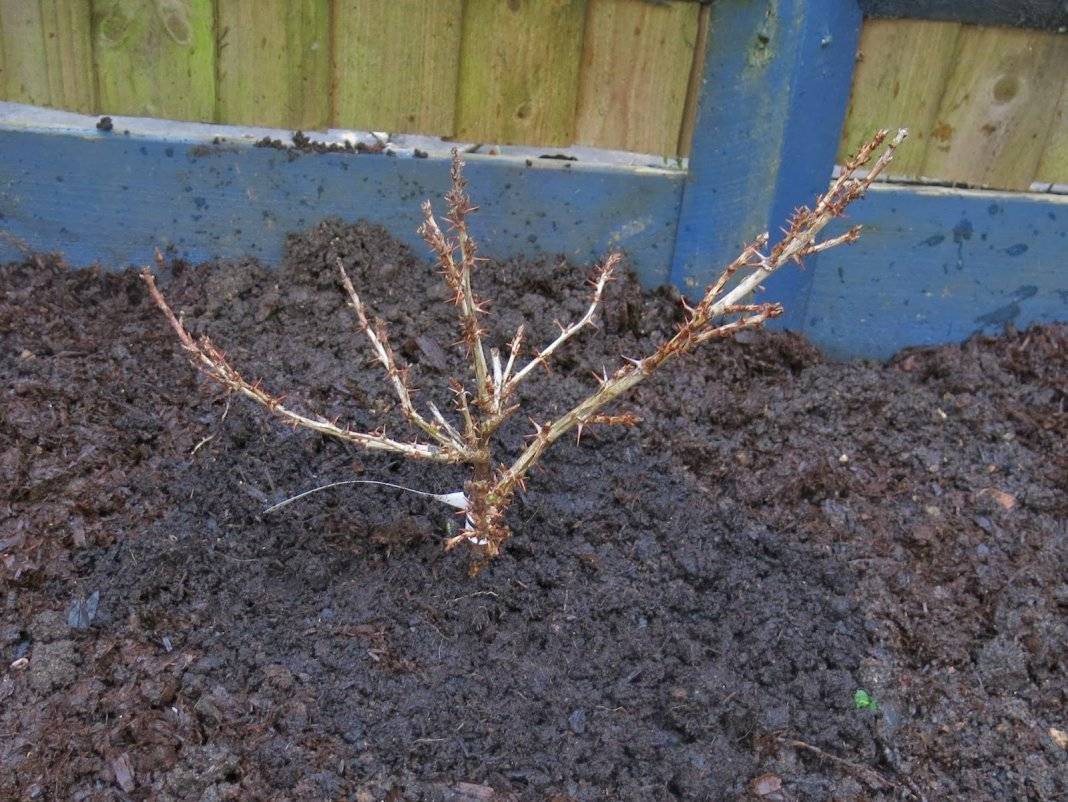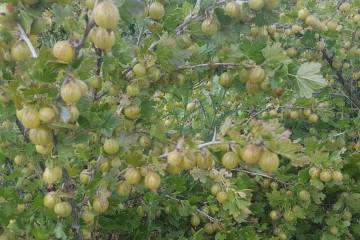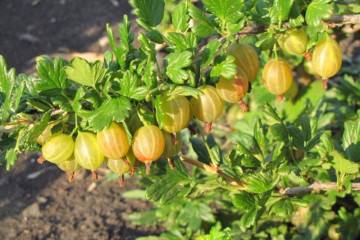Black gooseberries - growing at home
Content:
Today, the gooseberry varieties include green, whitish, reddish, purple and almost pink berries. Among them there is a special one - black. Its popularity is high and has not declined for almost a hundred years.
Description and characteristics of gooseberry Black Negus
From America to the Eurasian continent, a fungal disease was brought - spheroteca (Latin Sphaerotheca). It was also called American powdery mildew. Fruit bushes suffered the most from it: currants, rose hips, gooseberries and others. Many discoveries have been made towards obtaining disease-resistant crops. For example, this is how the black gooseberry is obtained.
Origin story
IV Michurin in 1928 began work on breeding gooseberries, resistant to spheroteca. Success came after crossing the European large-fruited Anibut variety (Latin Ribes grossularia L.) with the North American wild gooseberry. The seeds of the ripe fruits were sown and in 1932 they gave the first harvest of large black berries with smooth skin. The hybrid was given the name Black Negus. It was used for subsequent breeding work, but the original was highly appreciated, and quickly spread in gardens throughout the USSR.
Characteristics of the bushes
By the age of 4, the bush reaches a height of about 1.5 m. The shoots are strong, spreading, arched. The leaf is large, dark green, with slight pubescence. The spines are large and numerous, they are single, double, triple, with the tips bent down in the form of hooks.
Characteristics of berries
The black berries on the gooseberry are flat, inversely ovoid, about 2 cm across. The skin is dense and elastic, black with shine, without pubescence, sometimes with a bluish-gray waxy bloom. The average weight of the berry is about 3.6 g. Light green stalks about 18 mm long hold the berries tightly until ripening. The sweet and sour pulp is colored black and red with red carmine veins. Inside the berries are triangular brown-brown seeds. Ripening period - the second half of July.
Variety Black Prince
The newest seedlings on sale may be called the Black Prince. They may differ from their predecessor in the size of the berries, the number of thorns, the shape and color of the leaves. But in general, the yield and characteristics of the berries remained the same and serve as a kind of standard for comparison with gooseberries of other colors.
Ripening period and yield
The exact ripening time of berries depends on the region of cultivation and weather conditions. But usually the crop is harvested in the second half of July after the 20th. The bush gives the first berries already in the 2nd year of life, and by the 4th year it shows its full potential - about 7 kg per season.Ripe berries sit firmly on the branches and do not crumble even after rain.
Taste qualities
Although the skin is rather thin, the berries tolerate transportation well, do not wrinkle or burst. The taste is considered dessert - sweet with a pronounced pleasant sourness, deserves a score of 4.7 points on a 5-point scale.
Drought resistance and frost resistance
The variety is frost-resistant. Without shelter, it can winter in regions with a winter temperature minimum of -25 degrees. The culture can be classified as drought-resistant. Moreover, when planted near water bodies or in damp lowlands, the bushes suffer from root rot.
Disease and pest resistance
In addition to the spheroteca, the culture is immune to rust and common powdery mildew. It is extremely rarely affected by infectious diseases. The variety is not resistant from the pests common in the middle lane - aphids, moths, gall midges and others.
Using berries
Black gooseberries are versatile. Berries can be eaten fresh, juiced, dried and frozen for long-term storage. There are many recipes for jam, jams and compotes with black chokeberry, and they also make dessert berry wine, liqueurs and liqueurs from it.
Advantages and disadvantages of the variety
Among the positive qualities of the Black Negus:
- Pleasant taste of large and juicy berries.
- Universal purpose.
- High yield from the 2nd year after planting (up to 7 kg per bush).
- Keeping quality of berries - up to 4 weeks.
- Good transportability.
- Frost resistance up to -25 degrees.
The disadvantage is the large number of thorns on the branches, because of which it is best to pick berries with durable gloves.
Planting young seedlings on the site
Varietal planting material is bought in nurseries, giving preference to seedlings with a closed root system. A distinctive feature is sharp thorns.
If the seedling is purchased in a container with soil, then no preparation is required for it. Instances with bare roots are soaked in water for a day, adding a fungicide or a growth stimulant to it. In the spring, the bushes should be with dormant buds, and in the fall - without traces of diseases on the branches.
Planting in spring is carried out in the first half of March, when the snow has just melted in the beds. Autumn planting is performed after shedding foliage. 1-1.5 m are left between the bushes, and with an ordinary planting - up to 1.5 m between the rows.
The place for the Black Negus should be very sunny, without any shading, but always protected from strong winds. It is best to plant on a small hill or on a slope so that no stagnant water forms at the roots.
Site preparation
The earth is dug up 10 days before planting, adding compost or humus to it. If the soil is prepared in the fall, then a little sand is introduced into it mixed with rotted sawdust to improve its structure. The optimum acidity level is pH = 6.0. Trenches and planting holes are dug from north to south.
The work is performed in the following order:
- Dig planting holes 50x50 cm.
- The backfill soil is mixed with 50 g of superphosphate and 50 g of potassium fertilizer.
- Garter pegs are installed at the bottom of the holes.
- The root collar is buried 5-10 cm.
- After backfilling, all the bushes are watered - 10 liters of water for each.
- Trunk circles are mulched with peat or sawdust.
Features of seasonal care
They begin to take care of gooseberries in early spring and end only in late autumn. Agricultural rules are standard for this fruit crop.
Watering and feeding
The black negus does not like prolonged drought and also negatively perceives prolonged rains.If it rains every week in the summer, no watering is required. In dry summers, water every week - 10 liters of water for each bush.
If, during planting, compost or humus was introduced into the ground, then the first top dressing will need to be applied only in the 3rd year.
Mulching and loosening
With the help of mulching near-trunk circles, several problems are solved at once: you do not need to water gooseberries too often, and weeds practically stop growing on such soil. Since the root system lies close to the surface, when mulching, you will not need to loosen the soil after watering, it will not dry out with a crust and crack in dry times.
Using supports
Supports are used for trellis plantings. They are installed at the ends of the rows and a wire is pulled between them at a height of 50, 80 and 100 cm from the soil level. Gooseberry whips are tied to them as they grow in bunches of 5 pieces.
Under unfavorable conditions, gooseberries can suffer from diseases and pests, so they must be sprayed before flowering, as well as after harvesting.
In the spring, the shoots are shortened by a third, removing broken, diseased, dry and old branches. The branches growing horizontally are not useful either. The optimal number of shoots is no more than 20 for a bush over 4-5 years old.
Shelter for the winter is required only in regions where frosts drop below -25 degrees. For protection, the bushes are spud up with peat or sawdust, and then covered with spruce branches, agropat, burlap.
Reproduction
Negus is a gooseberry that easily multiplies in a variety of ways, up to sowing seeds. Choose the method that is most convenient under the given conditions.
By cuttings
Last year's shoots 12-15 cm long with 3-4 buds are excellent planting material. They are cut before flowering and immediately planted in the ground, covered with plastic bottles on top. Successfully rooted specimens are planted after a year to a permanent place.
By dividing the bush
Bushes over 4 years old can be dug up and divided into 2-3 parts, each one being planted in a separate planting hole. The best time for this is mid-March before the start of sap flow.
Layers
Shoots are bent to the ground and buried in early spring. With successful rooting, young bushes are planted in a permanent place only a year later - in May.
Shoots
Roots are usually cut to avoid thickening of the bush. But if necessary, it is carefully dug out, cut off from the main roots and planted in a new place. The best time for this is May or the end of August.
Pest and disease control
For prophylactic purposes, gooseberries are sprayed with fungicides before bud break in the spring, as well as with the preparation "Baikal-EM-1", Bordeaux liquid. Spraying is carried out in 2-3 doses with an interval of 7 days.
Black Negus is a variety that does not need long introductions; it is loved in our country and abroad for its unpretentiousness, fertility and vitality. The only negative is the sharp thorns. But gardeners also know the approach to them.
